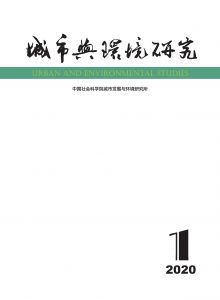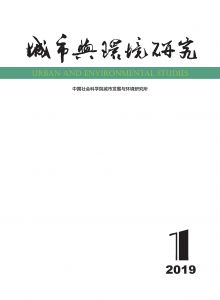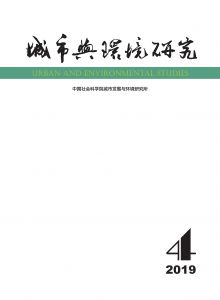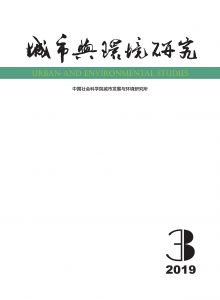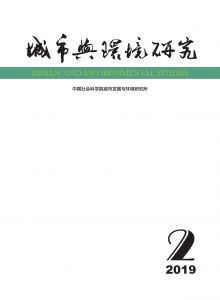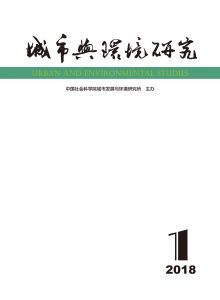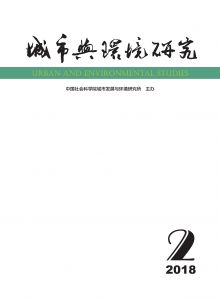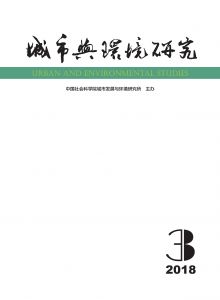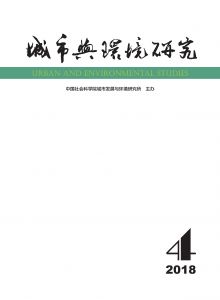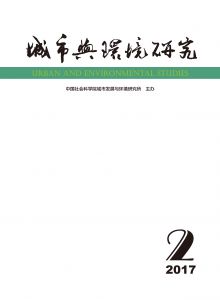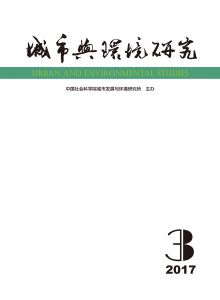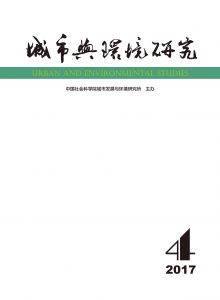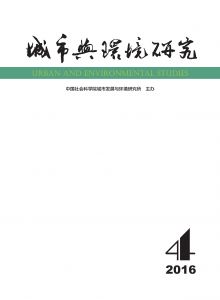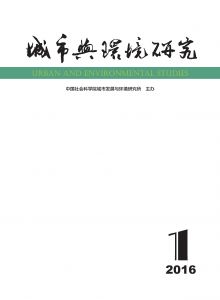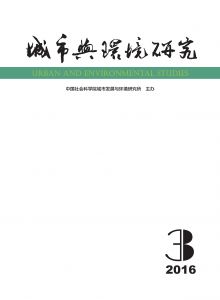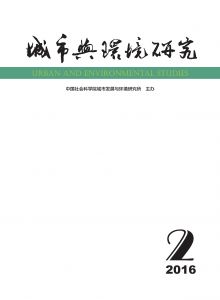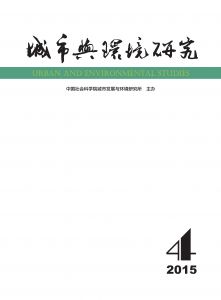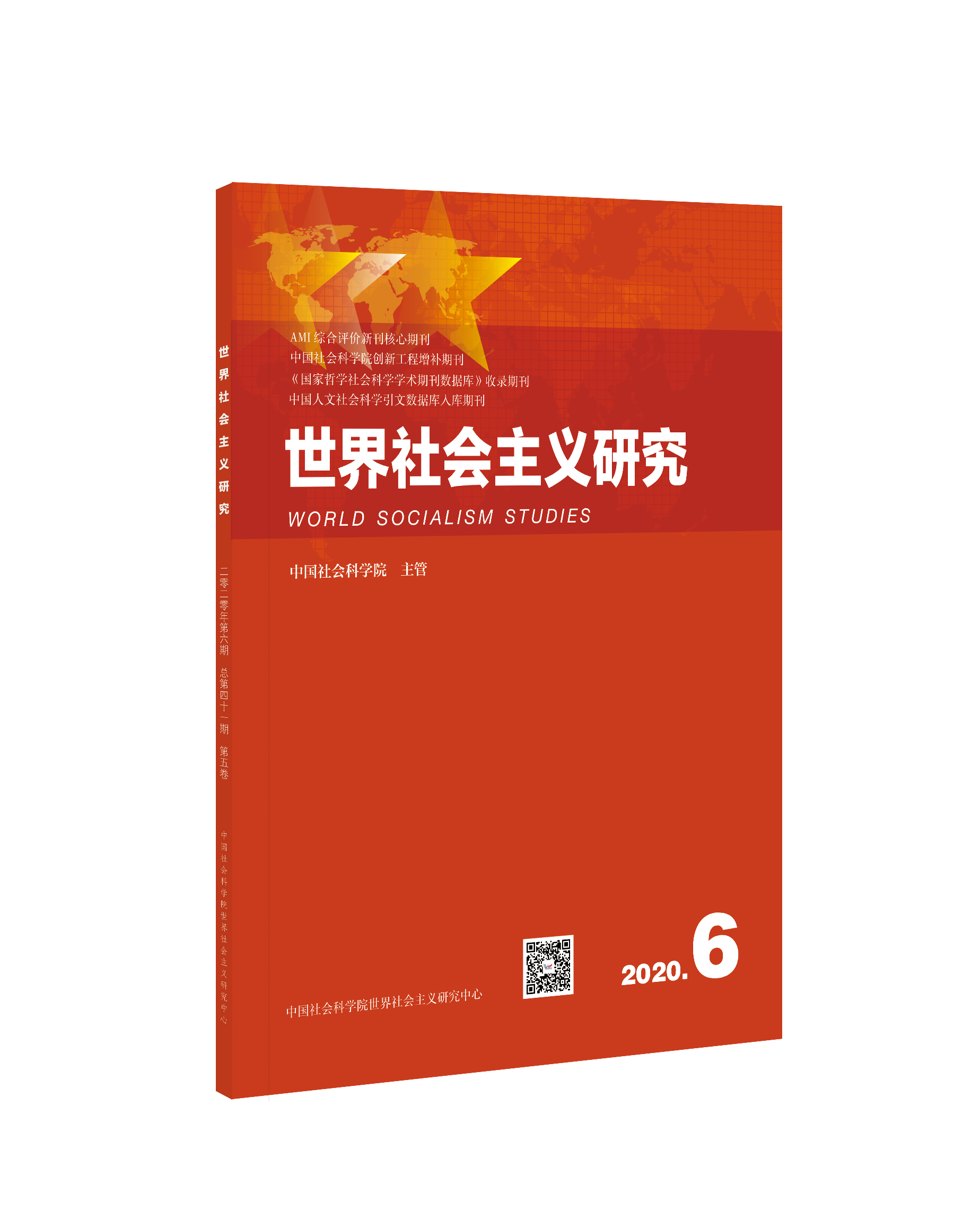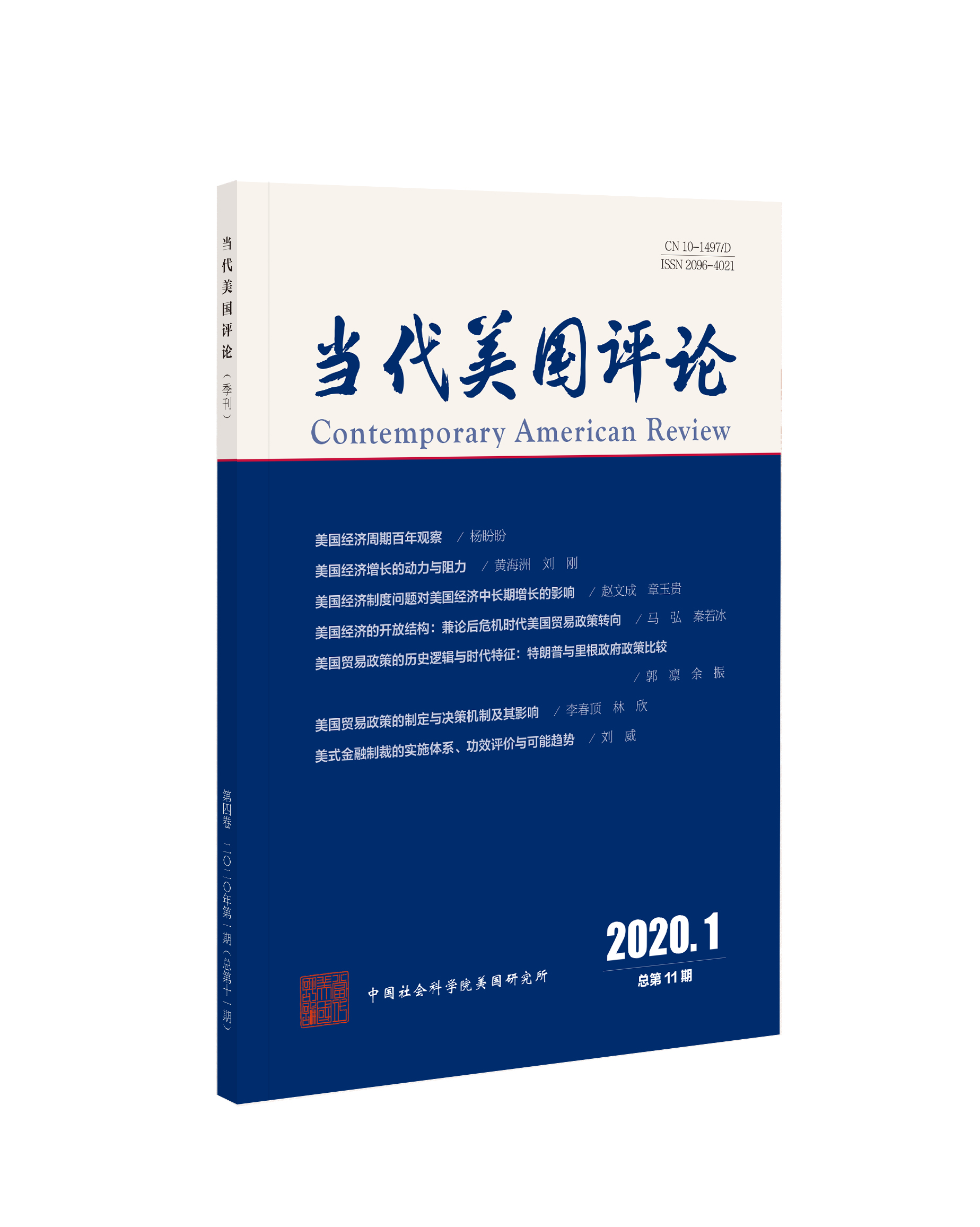最新期刊
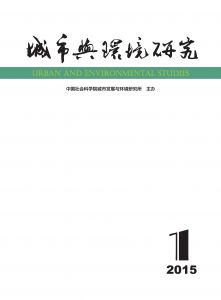
目录
过往期刊
参考文献
-
编委会
-
·学术论文·
-
中国房价预警指标体系构建与变动趋势预测
-
北京市高温热浪脆弱性评价
-
集聚外部性与城市制造业企业生产率研究
-
城市就业密度、市场规模与劳动生产率
-
-
·学术访谈·
-
对中国房地产市场发展进入新时期的思考
-
-
·学术综述·
-
京津冀协同发展研究现状与展望
-
国外绿色经济增长理论研究进展述评
-
-
·会议综述·
-
天津论坛(2015)“城市发展与治理”会议综述
-
-
2015年中国区域科学协会年会(RSAC’2015)征文启事
-
“第五届亚洲区域科学研讨会”征稿启事
-
投稿须知
-
版权页
按年份浏览:
- 全部
- 2020
- 2019
- 2018
- 2017
- 2016
- 2015
- 2014
[1][1]陈旭(2013):《基于时差分析法的旅游经济运行预警指标筛选》,《生态经济》第11期,第87~90页。
[2][2]郭磊、王锋、刘长滨(2003):《深圳市房地产预警系统研究》,《数量经济技术经济研究》第7期,第22~26页。
[3][3]李斌(2004):《房地产市场预报预警系统建立过程中的误区及应注意的要点》,《中国房地产》第2期,第32~35页。
[4][4]李晨(2010):《基于因子分析法的中国房价影响因素分析》,《经济研究导刊》第6期,第158~159页。
[5][5]李崇明、丁烈云(2005):《基于系统核与核度理论的房地产预警系统指标体系的选取方法》,《数学的实践与认识》第11期,第45~52页。
[6][6]彭翊(2002):《城市房地产预警系统设计》,《中国房地产》第6期,第50~52页。
[7][7]师应来、王平(2011):《房地产预警指标体系及综合预警方法研究》,《统计研究》第11期,第16~21页。
[8][8]时筠仑、雷星晖、苏涛永(2005):《房价波动与影响因素分析》,《价格理论与实践》第4期,第21~22页。
[9][9]叶艳兵、丁烈云(2001):《房地产预警指标体系设计研究》,《基建优化》第3期,第1~3页。
[10][10]张涛、龚六堂、卜永祥(2006):《资产回报、住房按揭贷款与房地产均衡价格》,《金融研究》第2期,第1~11页。
[11][11]Bartik,T. J.(1991),Who Benefits from State and Local Economic Development Policies ,Knoville:University of Tennessee Press,pp.57-80.
[12][12]Decarlo,S.W.(1997),Property Management ,Prentice Hall,pp.160-170.
[13][13]Dowall,D.E. and J.D.Landis(2003),“The Importance of the Context and the Level of Analysis:Authors Response”,Housing,Theory and Society ,20,pp.134-136.
[14][14]Eric,M.T.(1999),“Housing Early Warning System Feasibility In the Hamline Midway Area”,Neighborhood Planning for Community Revitalization ,(3) pp.244-253.
[15][15]Evans,A. (1987),Housing Prices and Land Prices in the South East-A Review ,London:The House Builders Federation,pp.91-95.
[16][16]Geoff,K.(1999),“Modelling the Demand and Supply Side of the Housing Market:Evidence from Ireland”,Economic Modelling ,16,pp.389-409.
[17][17]Lori,M.(1998),“Predicting Housing Abandonment in Central:Creating an Early Warning System”,Central Neighborhood Improvement Association ,3,pp.1-16.
[18][18]Pace,R. K.,R. Barry and O.W. Gilley(2000),“A Method for Spatial-Temporal Forecasting with an Application to Real Estate Prices”,International Journal of Forecasting ,16(2),pp.229-246.
[19][19]Quigley,J.M. (1995),“A Simple Hybrid Model for Estimating Real Estate Price Indexes”,Journal of Housing Economics ,4(1),pp.1-12.
[20][20]Ronald,W.K.(1997),“The Long Cycle in Real Estate”,Journal of Real Estate Research ,14,pp.233-258.
[21][21]Witold,W.(2002),“The Use of the HP-filter in Constructing Real Estate Cycle Indicators”,Journal of Real Estate Research ,23(1),pp.65-78.
[22][22]北京市人民政府(2013):《北京》,http://www.gov.cn/test/2013-03/25/content_2361895.htm,3月25号。
[23][23]北京市统计局(2005):《北京市常住人口现状及特征分析》,http://www.bjstats.gov.cn/ldcxxt/tjfx/tjbg/200506/t20050615_28116.htm,3月1号。
[24][24]北京市统计局(2013):《2013年北京常住人口主要数据解读》,http://www.bjstats.gov.cn/sjfb/bssj/ndsj/ndsjfpfb/2013n/201406/t20140618_274951.htm,6月18号。
[25][25]北京市统计局、国家统计局北京调查总队(2014):《北京统计年鉴》(2014),http://www.bjstats.gov.cn/nj/main/2014-tjnj/CH/index.htm,9月1号。
[26][26]蔡博峰、陆军、刘兰翠等(2011):《城市与气候变化》,北京:化学工业出版社,第55页。
[27][27]黄卓、陈辉、田华(2011):《高温热浪指标研究》,《气象》第3期,第345~351页。
[28][28]季崇萍、刘伟东、轩春怡(2006):《北京城市化进程对城市热岛的影响研究》,《地球物理学报》第1期,第69~77页。
[29][29]李恺(2009):《层次分析法在生态环境综合评价中的应用》,《环境科学与技术》第2期,第183~185页。
[30][30]李克南、杨晓光、刘志娟等(2010):《全球气候变化对中国种植制度可能影响分析Ⅲ.中国北方地区气候资源变化特征及其对种植制度界限的可能影响》,《中国农业科学》第10期,第2088~2097页。
[31][31]李丽华、郑新奇、象伟宁(2012):《基于GIS的北京市建筑密度空间分布规律研究》,《中国人口·资源与环境》第1期,第122~127页。
[32][32]李湉湉、杜艳君、莫杨等(2014):《基于脆弱性的高温热浪人群健康风险评估研究进展》,《环境与健康杂志》第6期,第547~550页。
[33][33]刘志刚、徐慧、孙章权(2006):《群组层次分析法在海底管道工艺设计中的应用研究》,《石油工程建设》第2期,第24~27页。
[34][34]路兴武、郝钢(2011):《论我国智能手机市场发展趋势》,《黑龙江对外经贸》第5期,第63~64页。
[35][35]彭少麟、周凯、叶有华等(2005):《城市热岛效应研究进展》,《生态环境》第4期,第574~579页。
[36][36]石勇、许世远、石纯等(2011):《自然灾害脆弱性研究进展》,《自然灾害学报》第2期,第131~137页。
[37][37]唐国利、罗勇、黄建斌等(2012):《气候变暖在继续》,《气候变化研究进展》第4期,第235~242页。
[38][38]王敏珍、郑山、王式功等(2012),《高温热浪对人类健康影响的研究进展》,《环境与健康杂志》第7期,第662~664页。
[39][39]王岩、方创琳、张蔷(2013):《城市脆弱性研究评述与展望》,《地理科学进展》第5期,第755~768页。
[40][40]谢盼、王仰麟、彭建等(2015):《基于居民健康的城市高温热浪灾害脆弱性评价——研究进展与框架》,《地理科学进展》第2期,第165~174页。
[41][41]谢欣露、郑艳、潘家华等(2013):《气候变化下的城市脆弱性及适应——以长三角城市为例》,《城市与环境研究》(以书代刊)第1期,北京:社会科学文献出版社,第43~62页。
[42][42]谢正磊、许学工(2007):《基于非线性理论的绿色空间和建设用地竞争关系研究—以北京市为例》,《水土保持研究》第6期,第223~226页、第230页。
[43][43]许遐祯、郑有飞、尹继福等(2011):《南京市高温热浪特征及其对人体健康的影响》,《生态学杂志》第12期,第2815~2820页。
[44][44]杨红龙、许吟隆、陶生才等(2010):《高温热浪脆弱性与适应性研究进展》,《科技导报》第19期,第98~102页。
[45][45]张明顺、冯利利、黎学琴等(2011):《欧盟城市适应气候变化的机遇和挑战》,北京:中国环境出版社,第26~27页。
[46][46]张天宇、程炳岩、唐红玉等(2011):《重庆极端高温指标的对比及其与区域性增暖的关系》,《热带气象学报》第4期,第585~593页。
[47][47]郑祚芳、高华、王在文等(2012):《城市化对北京夏季极端高温影响的数值研究》,《生态环境学报》第10期,第1689~1694页。
[48][48]朱喜安、魏国栋(2015):《熵值法中无量纲化方法优良标准的探讨》,《统计与决策》第2期,第12~15页。
[49][49]Basu,R. and J.M. Samet(2002),“Relation between Elevated Ambient Temperature and Mortality:A Review of the Epidemiologic Evidence”,Epidemiological Review ,(24)2,pp.190-202.
[50][50]Chow,W.T.L. and W.C.P. Gober(2012),“Vulnerability to Extreme Heat in Metropolitan Phoenix:Spatial,Temporal and Demographic Dimensions”,The Professional Geographer ,(64)2,pp.286-302.
[51][51]Dousset,B.,F. Gourmelon,and K. Laaidi,et al. (2011),“Satellite Monitoring of Summer Heat Waves in the Paris Metropolitan Area”,International Journal of Climatology ,(31)2,pp.313-323.
[52][52]Füssel,H.M. and J.T. Klein (2006),“Climate Change Vulnerability Assessments:an Evolution of Conceptual Thinking”,Climatic Change ,(75)3,pp.301-329.
[53][53]Faunt,J.D.,T.J. Wilkinson,and P. Aplin,et al.(1995),“The Effete in the Heat:Heat-related Hospital Presentations During a Ten-day Heat Wave”,Australian and New Zealand Journal of Medicine ,(25)2,pp.117-120.
[54][54]García-Herrera,R.,J. Diaz,and R.M. Trigo,et al.(2010),“A Review of the European Summer Heat Wave of 2003”,Critical Reviews in Environmental Science and Technology ,(40)4,pp.267-306.
[55][55]Grize,L.,A. Huss,and O.Thommen,et al. (2005),“Heat Wave 2003 and Mortality in Switzerland”,Swiss Medical Weekly ,(135)13,pp.200-205.
[56][56]IPCC (2007),Climate change 2007:Impacts,Adaptation and Vulnerability,Contribution of Working Group II to the Fourth Assessment Report of the Intergovernmental Panel on Climate Change ,Cambridge,UK and New York,USA:Cambridge University Press,pp.869-883.
[57][57]Johnson,D.P.,A. Stanforth,and V.Lulla,et al.(2012),“Developing an Applied Extreme Heat Vulnerability Index Utilizing Socioeconomic and Environmental Data”,Applied Geography ,(35),pp.23-31.
[58][58]Keramitsoglou,I.,C.T. Kiranoudis,and B. Maiheu,et al. (2013),“Heat Wave Hazard Classification and Risk Assessment Using Artificial Intelligence Fuzzy Logic”,Environmental Monitoring and Assessment ,(185)10,pp.8239-8258.
[59][59]Keatinge,W.,G. Donaldson,and E. Cordioli,et al. (2000),“Heat-related Mortality in Warm and Cold Regions of Europe:Observational Study”,British Medical Journal ,(321)7262,pp.670-673.
[60][60]Kovats,R.S. and S. Hajat(2008),“Heat Stress and Public Health:A Critical Review”,Annual Review of Public Health ,(29),pp.41-55.
[61][61]Rey,G.,A. Fouillet,and P. Bessemoulin,et al. (2009),“Heat Exposure and Socio-economic Vulnerability as Synergistic Factors in Heat-wave-related Mortality”,European Journal of Epidemiology ,(24)9,pp.495-502.
[62][62]Schauser,I.,S.Otto,and S. Schneiderbauer,et al. (2010),Urban Regions:Vulnerabilities,Vulnerability Assessments by Indicators and Adaptation Options for Climate Change Impacts ,ETC/ACC Technical Paper,pp.88-93.
[63][63]Swart,R.,J. Fons,and W. Geertsema,et al.(2012),Urban Vulnerability Indicators:A joint report of ETC-CCA and ETC-SIA ,ETC-CCA and ETC-SIA Technical Report,pp.29-33.
[64][64]Uejio,C.K.,O.V. Wilhelmi,and J.S. Golden,et al.(2011),“Intra-urban Societal Vulnerability to Extreme Heat:the Role of Heat Exposure and the Built Environment,Socioeconomics,and Neighborhood Stability”,Health Place ,(17)2,pp.498-507.
[65][65]Van Dijk,M.P. and M.S. Zhang(2005),“Sustainability Indices as a Tool for Urban Managers,Evidence from Four Medium-sized Chinese Cities”,Environmental Impact Assessment Review ,(25)6,pp.667-688.
[66][66]Wolf,T. and G. McGregor(2013),“The Development of a Heat Wave Vulnerability Index for London,United Kingdom”,Weather and Climate Extremes ,(1),pp.59-68.
[67][67]薄文广(2007):《外部性与产业增长——来自中国省级面板数据的研究》,《中国工业经济》第1期,第37~44页。
[68][68]柴志贤、黄祖辉(2008):《集聚经济与中国工业生产率的增长——基于DEA的实证分析》,《数量经济技术经济研究》第11期,第3~15页。
[69][69]陈良文、杨开忠、沈体雁、王伟(2008):《经济集聚密度与劳动生产率差异——基于北京市微观数据的实证研究》,《经济学》(季刊)第1期,第100~114页。
[70][70]范剑勇(2006):《产业集聚与地区间劳动生产率差异》,《经济研究》第11期,第72~81页。
[71][71]范剑勇、冯猛、李方文(2014):《产业集聚与企业全要素生产率》,《世界经济》第5期,第51~70页。
[72][72]范剑勇、石灵云(2009):《产业外部性、企业竞争环境与劳动生产率》,《管理世界》第8期,第65~72页。
[73][73]傅十和、洪俊杰(2008):《企业规模、城市规模与集聚经济——对中国制造业企业普查数据的实证分析》,《经济研究》第11期,第112~125页。
[74][74]鲁晓东、连玉君(2012):《中国工业企业全要素生产率估计:1999-2007》,《经济学》(季刊)第1期,第541~558页。
[75][75]聂辉华、贾瑞雪(2011):《中国制造业企业生产率与资源误置》,《世界经济》第7期,第27~42页。
[76][76]聂辉华、江艇、杨汝岱(2012):《中国工业企业数据库的使用现状和潜在问题》,《世界经济》第5期,第142~158页。
[77][77]孙浦阳、韩帅、许启钦(2013):《产业集聚对劳动生产率的动态影响》,《世界经济》第3期,第33~52页。
[78][78]王德文、王美艳、陈兰(2004):《中国工业的结构调整、效率与劳动配置》,《经济研究》第4期,第41~49页。
[79][79]谢千里、罗斯基、张轶凡(2008):《中国工业生产率的增长与收敛》,《经济学》(季刊)第3期,第809~826页。
[80][80]张海峰、姚先国(2010):《经济集聚、外部性与企业劳动生产率——来自浙江省的证据》,《管理世界》第12期,第45~52页。
[81][81]Boschma,R.,A. Minondo,and M. Navarro (2013),“The Emergence of New Industries at the Regional Level in Spain:A Proximity Approach Based on Product Relatedness”,Economic Geography ,89,pp.29-51.
[82][82]Cainelli,G.,A. Fracasso,and G.V. Marzetti (2014),“Spatial Agglomeration and Productivity in Italy:A Panel Smooth Transition Regression Approach”,Papers in Regional Science ,93(3),pp.1-29.
[83][83]Dekle,R. (2002),“Industrial Concentration and Regional Growth:Evidence from the Prefectures”,Review of Economics and Statistics ,84,pp.310-315.
[84][84]Delgado,M.,C. Ketels,and M. E. Porter,et al.(2012),The Determinants of National Competitiveness ,NBER Working Paper,No. 18249.
[85][85]Duranton,G. and D. Puga (2004),“Micro-Foundations of Urban Agglomeration Economies”,in Henderson V,Thisse J.F. (ed.),Handbook of Regional and Urban Economics IV ,Amsterdam:North-Holland,pp.2063-2117.
[86][86]Glaeser,E. L. (2009),“The Wealth of Cities:Agglomeration Economies and Spatial Equilibrium in the United States”,Journal of Economic Literature ,47(4),pp.983-1028.
[87][87]Glaeser,E. L.,H. D. Kallal,and J. A. Scheinkman,et al. (1992),“Growth in Cities”,Journal of Political Economy ,100,pp.1126-1152.
[88][88]Henderson,J.V. (2003),“Marshall’s Scale Economies”,Journal of Urban Economics ,53,pp.1-28.
[89][89]Jacobs,J. (1969),The Economy of Cities ,New York:Vintage,pp.11-18.
[90][90]Ketels,C. (2013),“Recent Research on Competitiveness and Clusters:What are the Implications for Regional Policy?”,Cambridge Journal of Regions ,6(2),pp.269-284.
[91][91]Lu Jiangyong and Zhigang Tao (2009),“Trends and Determinants of China’s Industrial Agglomeration”,Journal of Urban Economics ,65,pp.167-180.
[92][92]Marschak,J. and W. Andrews (1944),“Random Simultaneous Equations and the Theory of Production”,Econometrica ,12,pp.143-205.
[93][93]Marshall,A. (1890),Principles of Economics ,Macmillan,London,pp.200-268.
[94][94]Martin,P.,T. Mayer,and F. Mayneris (2011),“Spatial Concentration and Plant-level Productivity in France”,Journal of urban economics ,69(2),pp.182-195.
[95][95]Neffke,F.,M. Henning,and R. Boschma (2011),“How do Regions Diversify over Time?Industry Relatedness and the Development of New Growth Paths in Regions”,Economic Geography ,87,pp.237-265.
[96][96]Olley,S. and A. Pakes (1996),“The Dynamics of Productivity in the Telecommunications Industry”,Econometrica ,64(6),pp.1263-1298.
[97][97]Porter,M. (1998),“Clusters and the New Economics of Competition”,Harvard Business Review ,12,pp.77-90.
[98][98]Rosenthal,S. and W. Strange (2004),“Evidence on the Nature and Sources of Agglomeration Economies”,In:Henderson V,Thisse J.F.(ed.),Handbook of Regional and Urban Economics IV ,Amsterdam:North-Holland,pp.2119-2171.
[99][99]Yasar,M. and R. Raciborski (2008),“Production Function Estimation in Stata Using the Olley and Pakes Method”,The Stata Journal ,8(2),pp.221-231.
[100][100]陈丰龙、徐康宁(2012):《本土市场规模与中国制造业全要素生产率》,《中国工业经济》第5期,第44~56页。
[101][101]范剑勇(2006):《产业集聚与地区间劳动生产率差异》,《经济研究》第11期,第72~81页。
[102][102]辜胜阻、李华、易善策(2010):《均衡城镇化:大都市与中小城市协调共进》,《人口研究》第5期,第3~11页。
[103][103]韩峰、柯善咨(2013):《空间外部性、比较优势与制造业集聚——基于中国地级市面板数据的实证分析》,《数量经济技术经济研究》第1期,第22~38页。
[104][104]黄玖立、黄俊立(2008):《市场规模与中国省区的产业增长》,《经济学》(季刊)第4期,第1317~1334页。
[105][105]黄玖立、李坤望(2006):《出口开放、地区市场规模和经济增长》,《经济研究》第6期,第27~38页。
[106][106]柯善咨、何鸣(2008):《市场和政府共同作用下的城市地价——中国城市的实证研究》,《当代经济科学》第30期,第25~32页。
[107][107]柯善咨、姚德龙(2008):《工业集聚与城市劳动生产率的因果关系和决定因素——中国城市的空间计量经济联立方程分析》,《数量经济技术经济研究》第12期,第3~14页。
[108][108]刘修岩、殷醒民(2008):《空间外部性与地区工资差异:基于动态面板数据的实证研究》,《经济学》(季刊)第1期,第77~98页。
[109][109]刘耀林、李纪伟、侯贺平等(2014):《湖北省城乡建设用地城镇化率及其影响因素》,《地理研究》第1期,第132~142页。
[110][110]苏红键、魏后凯(2013):《密度效应、最优城市人口密度与集约型城镇化》,《中国工业经济》第10期,第5~17页。
[111][111]亚当·斯密(1972):《国民财富的性质和原因的研究》,郭大力、王亚南译,北京:商务印书馆,第88页。
[112][112]中国人口与发展研究中心课题组(2012):《中国人口城镇化战略研究》,《人口研究》第3期,第3~13页。
[113][113]Abdel-Rahman,H. M. and M. Fujita(1990),“Productivity Variety,Marshallian Externalities and City Size”,Journal of Regional Science ,30(2),pp.165-183.
[114][114]Ades,A. and E. Glaeser(1999),“Evidence on Growth,Increasing Returns and the Extent of the Market”,Quarterly Journal of Economics ,114(3),pp.1025-1045.
[115][115]Alonso,W.(1964),Location and Land Use:Towards a General Theory of Land Rent ,Cambridge,Mass:Harward University Press,pp.72.
[116][116]Capello,R.(2007),Regional Economics ,Abingdon,Oxon:Routledge Press,pp.69.
[117][117]Carlino,G.,S. Chatterjee,and R. Hunt(2007),“Urban Density and The Rate of Invention”,Journal of Urban Economics ,61(3),pp.389-419.
[118][118]Ciccone,A. (2002),“Agglomeration Effect in Europe”,European Economic Review ,46,pp.213-227.
[119][119]Ciccone,A. and R. Hall(1996),“Productivity and the Density of Economic Activity”,American Economic Review ,86,pp.54-70.
[120][120]Combes,P.,G. Duranton,and G. L. Gobillon (2008),“Spatial Wage Disparities:Sorting Matters”,Journal of Urban Economics ,63,pp.723-742.
[121][121]Crozet,M. (2004),“Do Migrants Follow Market Potentials?An Estimation of A New Economic Geography Model”,Journal of Economic Geography ,4 (4),pp.439-458.
[122][122]Davis,D. and D. Weinstein(2001),Market Size,Linkages,and Productivity:A Study of Japanese Regions ,NBER Working Papers No.8518,National Bureau of Economic Research.
[123][123]Desmet,K. and S. L. Parente(2010),“Bigger Is Better:Market Size,Demand Elasticity,and Innovation”,International Economic Review ,51(2),pp.319-333.
[124][124]Duranton,G. and D. Puga(2004),“Microfoundations of Urban Agglomeration Economies”,Handbook of Regional and Urban Economics ,Vol.4.,J.V.Henderson and J. F. Thisse (eds.),Elsevier-North Holland,Amsterdam,pp.108-126.
[125][125]Fujita,M.,P. Krugman,and A.J. Venables(1999),The Spatial Economy,Cities,Regions and International Trade ,Cambridge,MA:MIT Press,pp.237-259.
[126][126]Hanson,G. H.(2005),“Market Potential,Increasing Returns,and Geographic Concentration”,Journal of International Economics ,67,pp.1-24.
[127][127]Harris,C. D.(1954),“The Market As a Factor in the Localization of Industry in the United States”,Annals of the Association of American Geographers ,64,pp.315-348.
[128][128]Henderson,J.V. (1974),“The Sizes and Types of Cities”,American Economic Review ,64(4),pp.640-656.
[129][129]Hoover,E. M.(1948),The Location of Economic Activity ,New York:McGraw-Hill,pp.192-213.
[130][130]Hotelling,H.(1929),“Stability in Competition”,The Economic Journal ,39(15),pp.41-57.
[131][131]Ke,S. Z. (2010),“Agglomeration,Productivity,and Spatial Spillovers across Chinese Cities”,The Annals of Regional Science ,45(1),pp.157-179.
[132][132]Lösch,A.(1954),The Economics of Location ,Jena:Fischer,English translation,New Haven,Conn:Yale University Press,pp.189-206.
[133][133]Marshall,A.(1890),Principles of Economics:An Introductory Volume ,9th edn,London:Macmillan,pp.179-211.
[134][134]Martínez-Galarraga,J.,E. Paluzie,and J. Pons(2008),“Agglomeration and Labor Productivity in Spain over the Long Term”,Cliometrica ,2(3),pp.195-212.
[135][135]Matano,A. and P. Naticchioni (2012),“Wage Distribution and the Spatial Sorting of Workers”,Journal of Economic Geography ,12,pp.379-402.
[136][136]Mills,E.(1972),Urban Economics ,Glenview:Scott Foresman and Co.,pp.99-113.
[137][137]Mion,G. and P. Naticchioni(2005),Urbanization Externalities,Market Potential and Spatial Sorting of Skills and Firms ,CEPR discussion paper 5172.
[138][138]Mion,G. and P. Naticchioni(2009),“The Spatial Sorting and Matching of Skills and Firms”,Canadian Journal of Economics ,42,pp.28-55.
[139][139]Murphy,K.,A. Shleifer,and R. Vishny(1989),“Industrialization and the Big Push”,Journal of Political Economy ,97(5),pp.1003-1026.
[140][140]O’Sullivan,A.(2009),Urban Economics ,7th edn. Boston,MA:Irwin McGraw Hill,pp.124.
[141][141]安虎森(2003):《有关区域经济政策的一些思考》,《南开学报》第4期,第34~40页。
[142][142]安虎森、高正伍(2010):《经济活动空间聚集的内生机制与区域协调发展的战略选项》,《南京社会科学》第1期,第22~29页。
[143][143]安虎森、李瑞林(2007):《区域经济一体化效应和实现途径》,《湖南社会科学》第5期,第95~102页。
[144][144]薄文广、陈飞(2015):《京津冀协同发展:挑战与困境》,《南开学报》(哲学社会科学版)第1期,第110~118页。
[145][145]陈红霞、李国平(2010):《京津冀区域经济协调发展的时空差异分析》,《城市发展研究》第5期,第7~11页。
[146][146]陈红霞、李国平、张丹(2011):《京津冀区域空间格局及其优化整合分析》,《城市发展研究》第11期,第74~79页。
[147][147]陈岩、武义青(2014):《关于京津冀产业优化调整的思考》,《河北经贸大学学报》(综合版)第4期,第84~87页。
[148][148]陈耀、陈梓、侯小菲(2014):《京津冀一体化背景下的产业格局重塑》,《天津师范大学学报》(社会科学版)第6期,第1~6页。
[149][149]成淑敏、高阳、黄姣、杨卓翔(2012):《京津冀及江浙沪经济圈生态足迹比较分析》,《长江流域资源与环境》第9期,第433~441页。
[150][150]崔冬初、宋之杰(2012):《京津冀区域经济一体化中存在的问题及对策》,《经济纵横》第5期,第75~78页。
[151][151]崔晶(2012):《区域地方政府跨界公共事务整体性治理模式研究:以京津冀都市圈为例》,《政治学研究》第2期,第91~97页。
[152][152]崔晶(2013):《生态治理中的地方政府协作:自京津冀都市圈观察》,《公共管理》第9期,第138~144页。
[153][153]郭凯(2014):《京津冀区域发展报告发布 河北功能定位:去重型化》,http://hebei.hebnews.cn/2014-07/24/content_4058397.htm,7月24日。
[154][154]胡爱荣(2014):《京津冀治理环境污染联防联控机制的应用研究》,《生态经济》第8期,第177~180页。
[155][155]纪良纲、晓国(2004):《京津冀产业梯度转移与错位发展》,《河北学刊》第6期,第198~201页。
[156][156]江曼琦、谢姗(2015):《京津冀地区市场分割与整合的时空演化》,《南开学报》(哲学社会科学版)第1期,第97~109页。
[157][157]李卫锋(2010):《京津冀区域信息化空间差异与协同发展研究》,《河北经贸大学学报》第6期,第52~54页。
[158][158]李彦丽、路紫(2006):《京津冀旅游信息化合作模式及策略研究》,《情报杂志》第2期,第112~114页。
[159][159]连玉明(2014):《试论京津冀协同发展的顶层设计》,《中国特色社会主义研究》第4期,第107~112页。
[160][160]刘纯彬(1992):《一个天方夜谭还是一个切实可行的方案—关于建立京津冀大行政区的设想》,《中国软科学》第3期,第29~32页。
[161][161]刘德谦(2014):《关于京津冀旅游协同发展的回望》,《旅游学刊》第11期,第13~15页。
[162][162]刘锋(2002):《新时期区域公共管理创新》,《中国行政管理》第5期,第39~41页。
[163][163]刘桂环、张惠远、万军、王金南(2006):《京津冀北流域生态补偿机制初探》,《中国人口·资源与环境》第4期,第120~124页。
[164][164]马海龙(2010):《京津冀区域治理的模式选择》,《北京行政学院学报》第6期,第7~11页。
[165][165]马海龙(2013):《京津冀区域协调发展的制约因素及利益协调机制构建》,《河北学刊》第3期,第90~96页。
[166][166]马强(2007):《世界区域经济一体化发展模式、路径及趋势》,《宏观经济管理》第9期,第69~71页。
[167][167]马晓河(2014):《从国家战略层面推进京津冀一体化发展》,《国家行政学院学报》第4期,第28~31页。
[168][168]穆瑞丽、黄志英(2008):《京津冀旅游合作的依据分析与机制构建》,《区域经济》第530期,第232~233页。
[169][169]聂元贞(2005):《区域经济一体化的路径选择理论评介》,《经济学动态》第8期,第98~103页。
[170][170]伞锋(2014):《推进京津冀三地协同发展》,《宏观经济原理》第5期,第38~40页。
[171][171]施祖麟、刘锋(2003):《新时期区域公共管理创新》,《中国人口·资源与环境》第3期,第19~22页。
[172][172]孙久文(2014):《京津冀合作难点与陷阱》,《人民论坛》第5期,第34~37页。
[173][173]孙久文、丁鸿军(2012):《京津冀区域经济一体化进程研究》,《经济与管理研究》第7期,第52~58页。
[174][174]汤碧(2002):《区域经济一体化模式比较》,《南开经济研究》第3期,第54~56页。
[175][175]王辉、李占平(2015):《京津冀跨区域轨道交通一体化的实现路径》,《河北学刊》第1期,第146~149页。
[176][176]王军、李逸波、何玲(2010):《基于生态补偿机制的京津冀农业合作模式探讨》,《河北经贸大学学报》第3期,第74~78页。
[177][177]王凯、周密(2015):《日本首都圈协同发展及对京津冀都市圈发展的启示》,《现代日本经济》第1期,第65~74页。
[178][178]王微微(2006~2007):《区域经济一体化的经济增长效应及模式选择研究》,北京:对外经济贸易大学。
[179][179]王玉海、何海岩(2014):《产业集群与京津冀协调发展》,《中国特色社会主义研究》第4期,第101~106页。
[180][180]魏后凯(2014):《重塑京津冀发展空间格局》,《经济日报》6月6日。
[181][181]魏丽华、李书锋、张健(2014):《建立京津冀联合治污的协调机制》,《开放导报》第1期,第87~89页。
[182][182]魏小安(2014):《京津冀旅游一体化的动力与推力》,《旅游学刊》第10期,第13页。
[183][183]文魁(2014):《京津冀大棋局——京津冀协同发展的战略思考》,《经济与管理》第6期,第8~12页。
[184][184]吴群刚、杨开忠(2010):《关于京津冀区域一体化发展的思考》,《城市问题》第1期,第11~16页。
[185][185]武玉英、李俊涛、蒋国瑞(2014):《京津冀制造业协同创新理论模型及发展对策》,《科技进步与对策》第24期,第36~40页。
[186][186]肖金成(2014):《京津冀:环境共治 生态共保》,《环境保护》第17期,第21~25页。
[187][187]肖金成(2014):《“一轴两带”:京津冀空间布局优化构想》,《中国经济周刊》第12期,第21页。
[188][188]徐永利(2013):《逆梯度理论下京津冀产业协作研究》,《河北大学学报》(哲学社会科学版)第5期,第73~78页。
[189][189]徐永利、赵炎(2014):《京津冀协同发展:河北省产业逆梯度推移策略》,《河北学刊》第4期,第214~217页。
[190][190]许瑞生(2006):《都市区的区域管治——地区发展中政府间的协调与管理》,《城市规划》第11期,第82~88页。
[191][191]薛俭、谢婉林、李常敏(2014):《京津冀大气污染治理省际合作博弈模型》,《系统工程理论与实践》第3期,第810~816页。
[192][192]杨毅、李向阳(2004):《区域治理:地区主义视角下的治理模式》,《云南行政学院学报》第2期,第50~53页。
[193][193]于维洋、许良(2008):《京津冀区域生态环境质量综合评价研究》,《干旱区资源与环境》第9期,第20~24页。
[194][194]臧秀清(2015):《京津冀协同发展中的利益分配问题研究》,《河北学刊》第1期,第192~196页。
[195][195]臧学英、于明言(2010):《京津冀战略性新兴产业的对接与合作》,《中国发展观察》第8期,第30~32页。
[196][196]张波(2014):《推动京津冀一体化发展的实现路径研究》,《经济研究参考》第44期,第40~44页。
[197][197]张贵、贾尚键、苏艳霞(2014):《生态系统视角下京津冀产业转移对接研究》,《中国天津市委党校学报》第4期,第105~112页。
[198][198]张贵、王树强、刘莎、贾尚键(2014):《基于产业对接与转移的京津冀协同发展研究》,《经济与管理》第4期,第14~20页。
[199][199]张京祥(2000):《城市与区域管治及其在中国的研究和应用》,《城市问题》第6期,第40~44页。
[200][200]张莉、唐茂华(2012):《京津冀都市圈发展新格局与合作机制创新研究》,《天津社会科学》第6期,第88~91页。
[201][201]张亚明、李新华、唐朝生(2012):《竞合视域下京津冀区域地缘经济关系测度分析》,《城市发展研究》第5期,第22~27页。
[202][202]张亚明、刘海鸥(2014):《协同创新博弈观的京津冀科技资源共享模型与策略》,《中国科技论坛》第1期,第34~41页。
[203][203]赵弘(2014):《北京大城市病治理与京津冀协同发展》,《经济与管理》第3期,第5~9页。
[204][204]赵弘(2014):《京津冀协同发展的核心和关键问题》,《中国流通经济》第12期,第20~24页。
[205][205]赵新峰、袁宗威(2014):《京津冀区域政府间大气污染治理政策协调问题研究》,《中国行政管理》第11期,第18~23页。
[206][206]赵媛、诸嘉(2007):《世界经济一体化的动力机制及组织类型》,《世界地理研究》第9期,第1~7页。
[207][207]周立群、曹知修(2014):《京津冀协同发展开启经济一体化新路径》,《中共天津市委党校学报》第4期,第100~104页。
[208][208]祝尔娟(2009):《京津冀一体化中的产业升级与整合》,《经济地理》第6期,第881~885页。
[209][209]祝尔娟(2014):《推进京津冀区域协同发展的思路与重点》,《经济与管理》第3期,第10~12页。
[210][210]Alan Harding(1995),“Elite Theory and Growth Machines”,In Judge D,Stoker G,Wolman H,Theories of Urban Politics ,Sage Publications Inc,pp.35-53.
[211][211]J. Friedman (1966),Regional Policy:A Case Study of Venezuela ,MIT Press.
[212][212]Rhodes,R.A.W.(1996),“The New Governance:Governing without Government”,Political Studies ,pp.652-667.
[213][213]Acemoglu,D.,Ph. Aghion,and L. Bursztyn(2012),“The Environment and Directed Technical Change”,American Economic Review ,102(1),pp.131-166.
[214][214]Aghion,P. and P. Howitt(1998),“Market Structure and the Growth Process”,Review of Economic Dynamics ,1,pp.276-305.
[215][215]Andersen,J.J. and S. Aslaksen(2008),“Constitutions and the Resource Curse”,Journal of Development Economics ,87,pp.227-246.
[216][216]Antal,M. (2014),“Green Goals and Full Employment:Are They Compatible?” Ecological Economic ,107,pp.276-286.
[217][217]Besley,T. and T. Persson (2011),“The Logic of Political Violence”,Quarterly Journal of Economics ,121(3),pp.1411-1445.
[218][218]Bovenberg,A. and J. Smulders(1996),“Transitional Impacts of Environmental Policy in an Endogenous Growth Model”,International Economic Review ,37(4),pp.861-893.
[219][219]Bowen,A. (2012),Green Growth,Green Jobs and Labour Markets ,World Bank Policy Research Working Paper,5990,Washington,DC:World Bank.
[220][220]Bresnahan,T. and M. Trajtenberg(1995),“General Purpose Technologies:‘Engines of Growth’?” Journal of Econometrics ,65 (1),pp.83-108.
[221][221]Brock,W.,and M. Taylor (2010),“The Green Solow Model”,Journal of Economic Growth ,15(2),pp.127-53.
[222][222]Cass,D. (1965),“Optimum Growth in an Aggregative Model of Capital Accumulation”,Review of Economic Studies ,32,pp.233-240.
[223][223]Dasgupta,P. (2010),“20th Anniversary of EAERE:The European Association of Environmental and Resource Economists”,Environmental and Resource Economics ,46,pp.135-137.
[224][224]Dasgupta,P. and G. Heal (1974),“The Optimal Depletion of Exhaustible Resources”,Review of Economic Studies ,45,pp.3-28.
[225][225]Di Maria,C. and E.Van Der Werf(2008),“Carbon Leakage Revisited:Unilateral Climate Policy with Directed Technical Change”,Environmental and Resource Economics ,39(2),pp.55-74.
[226][226]Dinda,S.(2014),“A Theoretical Basis for Green Growth”,International Journal of Green Economics ,8(2),pp.177-189.
[227][227]Egert,B.(2012),“Dutch Disease in the Post-Soviet Countries of Central and South-west Asia”,Journal of Asian Economics ,23(5),pp.571-584.
[228][228]Fisher,B.,S. Polasky,and Th. Sterner (2011),“Conservation and Human Welfare:Economic Analysis of Ecosystem Services”,Environmental and Resource Economics ,48(2),pp.151-159.
[229][229]Gans,J. (2011),“Innovation and Climate Change Policy”,American Economic Journal:Economic Policy ,4(4),pp.125-145.
[230][230]Gazheli,A.,M. Antal,and J. Van den Bergh (2015),Sector-level Tests of the Feasibility of Green Growth ,European Union Working Paper No. 81.
[231][231]Gerlagh,R. (2011),“Too Much Oil”,CESifo Economic Studies ,57,pp.79-102.
[232][232]Golosov,M.,J. Hassler,and P. Krusell,et al. (2010),Optimal Taxes on Fossil Fuel in General Equilibrium . Mimeo ,MIT,Cambridge,Mass.
[233][233]Goulder,L. (2004),Induced Technological Change and Climate Policy ,Technical Report,London,UK:Pew Center on Global Climate Change.
[234][234]Hallegatte,S.,G. Heal,and M. Fay,et al.(2011),From Growth to Green Growth:A Framework . Policy Research ,Working Paper,5872,Washington,DC:World Bank.
[235][235]Hart,R. (2004),“Growth,Environment and Innovation-A Model with Production Vintages and Environmentally Oriented Research”,Journal of Environmental Economics and Management ,48(3),pp.1078-1098.
[236][236]Hart,R. (2008),“The Timing of Taxes on CO2 Emissions when Technological Change is Endogenous”,Journal of Environmental Economics and Management ,55(2),pp.194-212.
[237][237]Heggedal,T. (2008),On R&D and the Undersupply of Emerging Versus Mature Technologies ,Discussion Paper 571,Statistics Norway.
[238][238]Hendl,P. and A. Loschel (2015),Social Implications of Green Growth Policies from the Perspective of Energy Sector Reform and its Impact on Households ,ZEW-centre for European Economics Research Discussion Paper,No.15-012.
[239][239]Jackson,T. and P. Victor (2011),“Productivity and Work in the Green Economy”,Environmental Innovation and Societal Transitions ,1,pp.101-108.
[240][240]Jacobs,M. (2012),Green Growth:Economic Theory and Political Discourse ,Working Paper No. 108,London,UK:Centre for Climate Change Economics and Policy.
[241][241]Jaffe A. B.,R. G. Newell,and R. N. Stavins (2005),“A Tale of Two Market Failures:Technology and Environmental Policy”,Ecological Economics ,54(2),pp.164-174.
[242][242]Janicke,M. (2012),“Green Growth:From a Growing Eco-Industry to Economic Sustainability”,Energy Policy ,48,pp.13-21.
[243][243]Koopmans,T. (1965),On The Concept of Optimal Economic Growth,In the Economic Approach to Development Planning ,Amsterdam:North-Holland.
[244][244]Lopez,R.(2010),“Sustainable Development:On the Co-Existence of Resource-Dependent and Resource-Impacting Industries”,Environment and Development Economics ,15,pp.687-705.
[245][245]Nordhaus,W. D. (1994),Managing the Global Commons:The Economics of Climate Change ,Cambridge MA:MIT Press.
[246][246]Nordhaus,W. D. (2008),A Question Of Balance:Weighing the Options On Global Warming Policies . New Haven & London:Yale University Press.
[247][247]Ploeg,F. and C. Withagen(2011),Growth,Renewable and The Optimal Carbon Tax ,Oxcarre Research Paper No. 55,University of Oxford.
[248][248]Popp,D. (2002),“Induced Innovation and Energy Prices”,American Economic Review ,92,pp.160-180.
[249][249]Quaas,M. and S. Smulders (2012),Brown Growth,Green Growth,and the Efficiency of Urbanization ,CESifo Working Paper Series 4044.
[250][250]Ramsey,F. (1928),“A Mathematical Theory of Saving”,Economic Journal ,38,pp.543-559.
[251][251]Resnick,D.,Tarp,F.,and J.Thurlow (2012),“The Political Economy of Green Growth:Cases from Southern Africa”,Public Administration and Development ,32,pp.215-228.
[252][252]Ricci,F. (2007),“Channels of Transmission of Environmental Policy to Economic Growth:A Survey of The Theory”,Ecological Economics ,60(4),pp.688-699.
[253][253]Romer,P. (1986),“Increasing Returns and Long-Run Growth”,Journal of Political Economy ,94,pp 1002-1037.
[254][254]Rozkrut,D. (2014),“Measuring Eco-Innovation:Towards Better Polices to Support Green Growth”,Folia Oeconomica Stetinensia ,14(1),pp 137-148.
[255][255]Schmalensee,R. (2012),“From ‘Green Growth’ to Sound Policies:An Overview”,Energy Economics ,34,pp.S2-S6.
[256][256]Sinn,H. W. (2008),“Public Policies Against Global Warming”,International Tax and Public Finance ,15,pp.360-394.
[257][257]Smulders,S. and C. Di Maria (2012),The Cost of Environmental Policy under Induced Climate Change ,Center Discussion Paper.
[258][258]Smulders,S. and E. Van Der Werf(2008),“Climate Policy and the Optimal Extraction of High-and Low-Carbon Fossil Fuels”,Canadian Journal of Economics ,41(4),pp.1421-1444
[259][259]Smulders,S. and M. De Nooij(2003),“The Impact of Energy Conservation on Technology and Economic Growth”,Resource and Energy Economics ,25,pp.59-79.
[260][260]Smulders,S.,Y. Tsur,and A. Zemel(2012),“Announcing Climate Policy:Can a Green Paradox Arise Without Scarcity?”,Journal of Environmental Economics and Management ,64(3),pp.364-376.
[261][261]Solow,R. (1956),“A Contribution to the Theory of Economic Growth”,Quarterly Journal ofEconomics ,70,pp.65-94.
[262][262]Stokey,N. (1998),“Are There Limits to Growth?”,International Economic Review ,39,pp 1-31.
[263][263]Tsur,Y. and A. Zemel(2011),“On The Dynamics of Competing Energy Sources”,Automatica ,47,pp.1357-1365.
[264][264]Van den Bergh,J.C.J.M. (2011),“Environment versus Growth-A criticism of ‘degrowth’ and a Plea for ‘a-growth’?”,Ecological Economics ,70(5),pp.881-890.
[265][265]Van Der Ploeg,F. and C. Withagen(2011),Growth and the Optimal Carbon Tax:When to Switch From Exhaustible Resources to Renewables ?,CEPR Discussion Papers 8215.
[266][266]World Bank (2012),Inclusive Green Growth:The Pathway to Sustainable Development ,Washington,DC:World Bank.
[展开]
相关推荐
手机可扫码阅读


